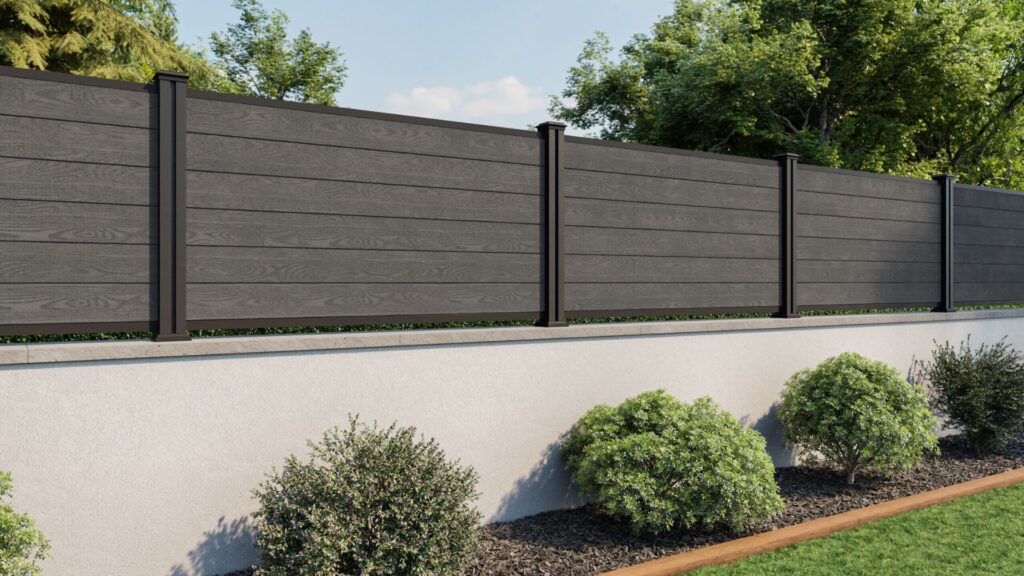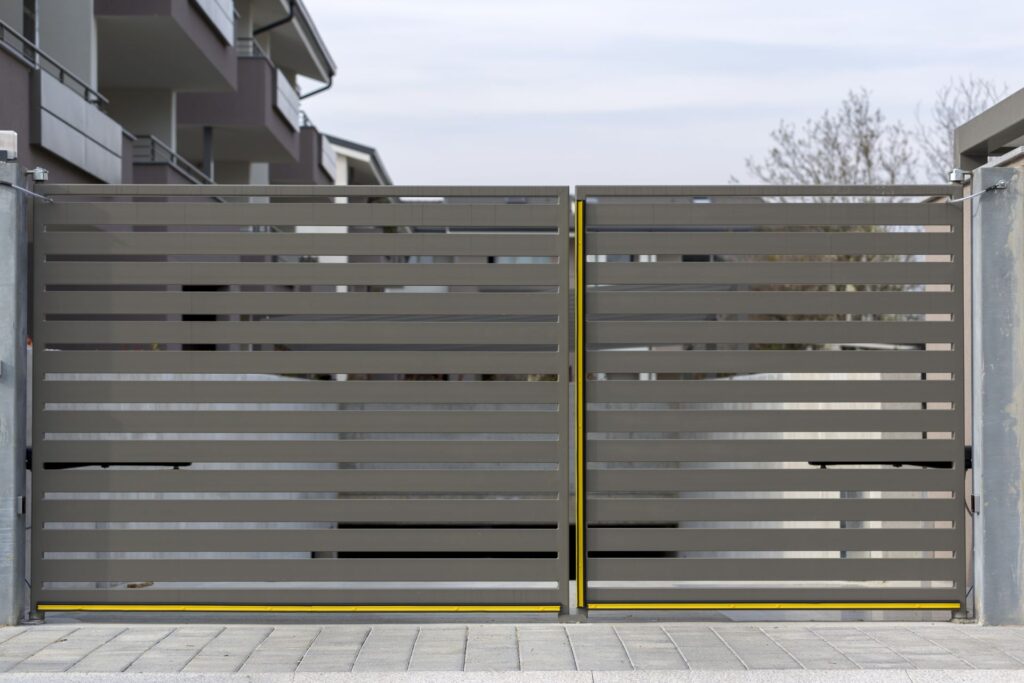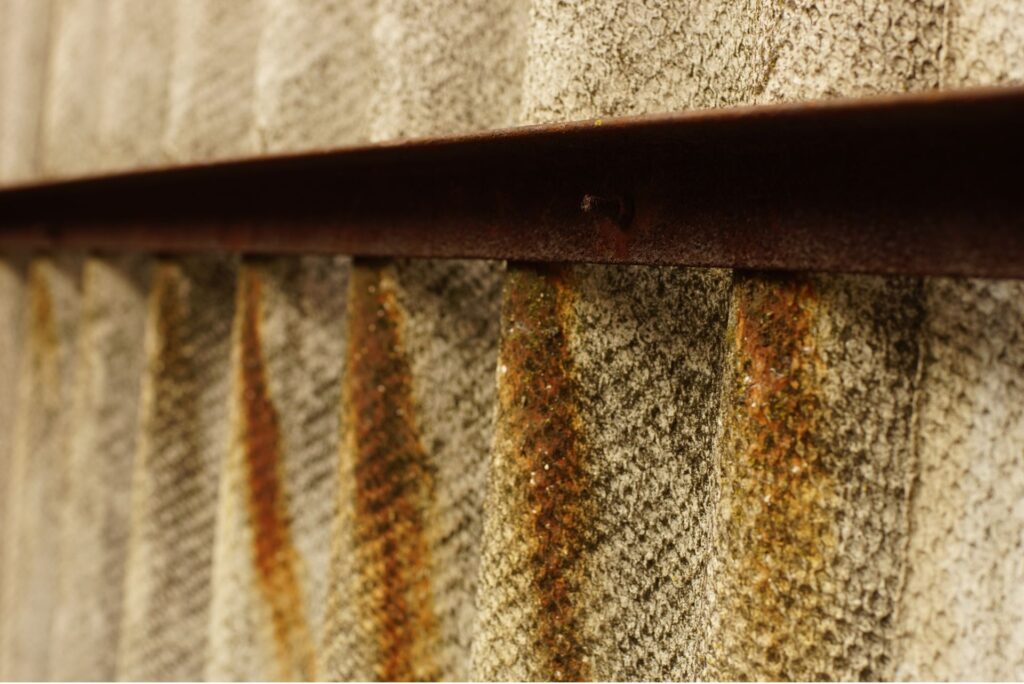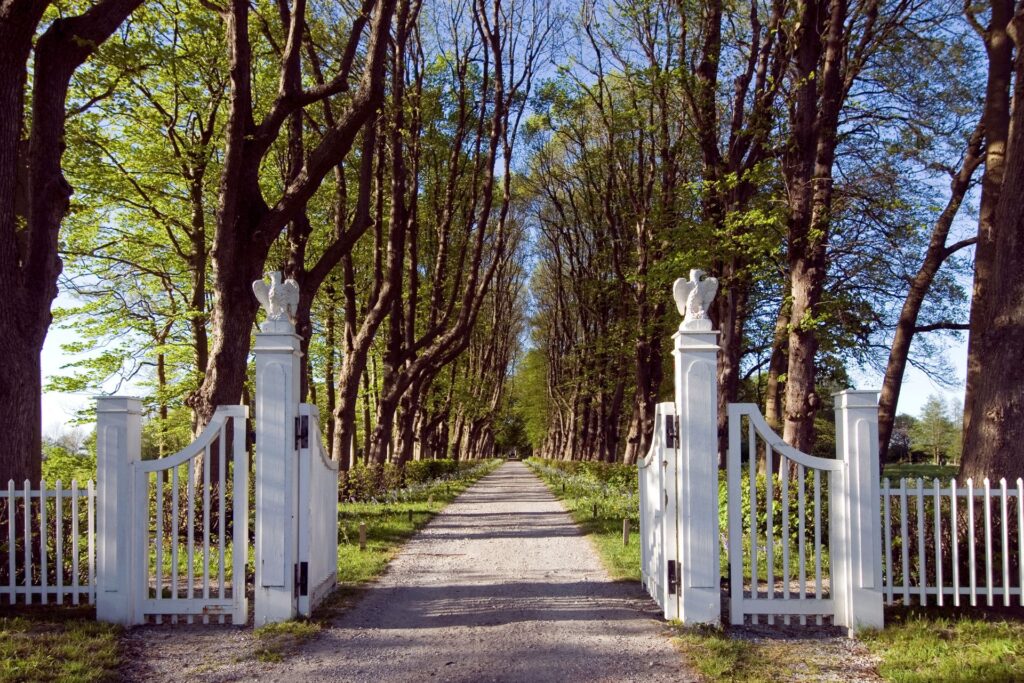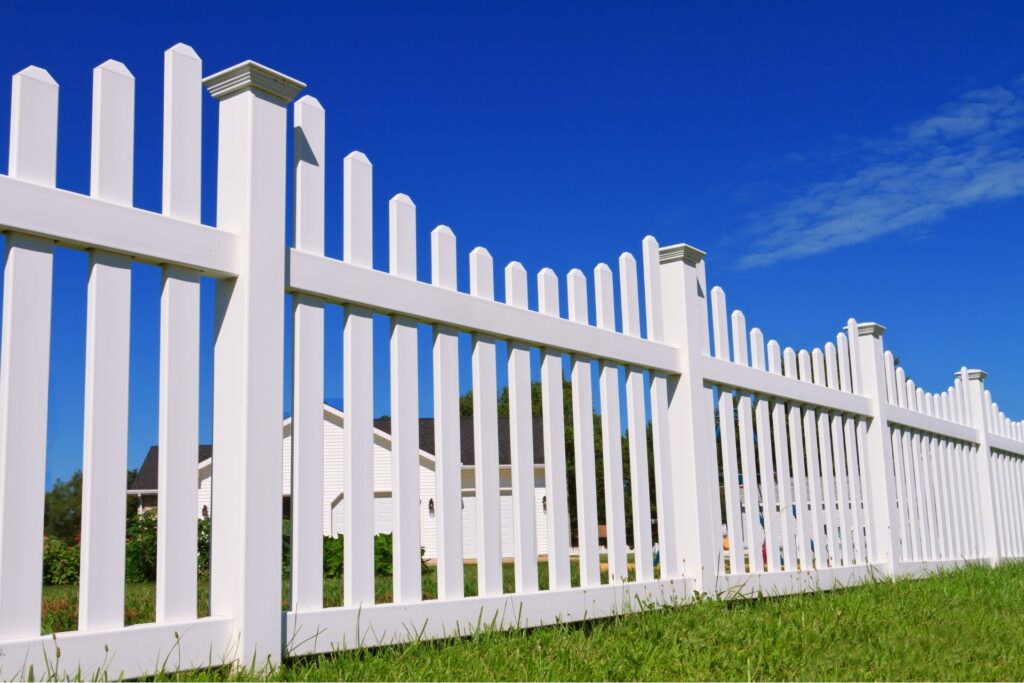Welcome to our in-depth guide on the durability and longevity of composite fences! If you’re tired of dealing with the maintenance headaches that come with traditional wooden fences, you’re in the right place. Composite fencing has become a popular choice for homeowners looking for a long-lasting, low-maintenance solution, but just how long do these fences actually last? In this post, we’ll explore what composite fences are made of, how long you can expect them to hold up, the factors that affect their lifespan, and some practical tips for keeping them in top shape for years to come. Whether you’re considering installing a composite fence or just curious about its durability, we’ve got everything you need to know right here.
Composite fences typically last 25 to 30 years or more, thanks to their durable blend of wood fibers and recycled plastic. Unlike traditional wood, composite fences resist rot, warping, and insect damage, making them a low-maintenance option for homeowners. With proper care, including regular cleaning and UV protection, a composite fence can retain its strength and appearance for decades.
Table of Contents
What Are Composite Fences?
When it comes to choosing the right fence for your property, composite fencing is gaining popularity as a durable, eco-friendly option. But what exactly are composite fences, and how do they compare to other fencing materials? Let’s dive into what makes composite fencing stand out.
Definition and Composition
Composite fences are made from a blend of wood fibers and recycled plastics, a combination that offers the best of both worlds—natural wood’s aesthetic appeal and plastic’s durability. Typically, these materials are fused together during the manufacturing process to form solid, weather-resistant fence panels. The recycled plastic component helps composite fencing resist moisture, mold, and pests, while the wood fibers give it a more natural, traditional appearance compared to all-vinyl or metal fences.
This unique composition means composite fences are far more durable than traditional wood fences. While wood can warp, rot, or become infested with termites over time, composite materials are built to withstand the elements. They don’t crack, splinter, or degrade as quickly as wood, making them a long-lasting solution for homeowners looking to invest in a low-maintenance fencing option.
Comparison to Other Fencing Materials
When choosing a fence, it’s important to consider not just the appearance but also the longevity, upkeep, and environmental impact of your options. Here’s how composite fences measure up against other common materials like wood, vinyl, and metal:
- Wood Fencing: Wood fences have a classic, timeless look, but they require regular maintenance. Over time, they can become prone to rot, warping, and insect damage, which means you’ll need to paint, stain, or treat them regularly. Composite fences, on the other hand, provide the natural look of wood without the constant upkeep. Plus, since composite fences are partially made from recycled materials, they are an eco-friendly option than traditional wood.
- Vinyl Fencing: Vinyl fences are another low-maintenance option, similar to composite in that they are resistant to rotting and don’t require staining or painting. However, vinyl can become brittle and crack in extreme temperatures, whereas composite fencing is designed to withstand a broader range of weather conditions. Composite fences also tend to look more like real wood than vinyl, offering a more natural, upscale appearance.
- Metal Fencing: Metal fences, particularly those made from aluminum or steel, are known for their strength and security. While durable, they can rust over time without proper care. In contrast, composite fences won’t rust or corrode, and they offer a more private and aesthetic solution. Additionally, composite fences have a smaller environmental footprint than most metal options, as they often incorporate recycled materials.
Environmental Impact and Sustainability
One of the key advantages of composite fencing is its environmental impact. Many composite fence panels are made from recycled wood and plastic, diverting waste from landfills and reducing the demand for raw materials. By opting for composite, you’re choosing a product that not only lasts longer but is also better for the planet.
In conclusion, composite fences offer a unique blend of durability, low maintenance, and eco-friendliness that makes them a top choice for modern fencing needs. They outperform traditional wood in longevity, rival vinyl in terms of ease of upkeep, and offer a more sustainable solution compared to metal fencing. Whether you’re looking to enhance your home’s curb appeal or invest in a long-term, environmentally-conscious solution, composite fencing is worth considering.

Average Lifespan Of Composite Fences
General Lifespan Expectancy of Composite Fences
Composite fences are known for their exceptional durability, with a typical lifespan ranging from 25 to 30 years or more, depending on the environmental conditions and the quality of installation. This longevity puts composite fencing in a competitive position compared to other common fencing materials. For example, wood fences, while aesthetically pleasing, often last only between 5 to 15 years due to their susceptibility to rot, insects, and weather damage. On the other hand, vinyl fencing offers a lifespan of around 20 to 30 years but can be prone to cracking or fading under extreme temperatures. Metal fences, such as those made of aluminum or steel, have a lifespan of 25 to 40 years but may require periodic maintenance to prevent rust and corrosion.
In comparison, composite fencing provides an excellent balance of longevity and minimal upkeep, making it a preferred choice for homeowners who value durability and low maintenance.
Why Composite Fences Last So Long
The extended lifespan of composite fences is largely due to the innovative combination of materials used in their construction. Composite fences are typically made from a blend of recycled wood fibers and plastic, creating a product that is highly resistant to common issues faced by traditional wooden fences, such as rotting, warping, and insect infestation. The plastic component adds strength and protection, while the wood fibers give it the natural look of wood without the vulnerabilities.
One of the key reasons composite fences last so long is their resistance to environmental stressors. Unlike wood, composite materials do not absorb moisture, which means they won’t warp, crack, or splinter over time. Additionally, composite fences are impervious to termites and other wood-boring insects, which are common culprits of wood fence degradation.
Another major advantage of composite fencing is its low-maintenance nature. Whereas wood fences require regular staining, painting, or sealing to maintain their appearance and structural integrity, composite fences need little more than occasional cleaning to remove dirt and debris. This low-maintenance quality not only saves homeowners time and effort but also contributes to the fence’s overall lifespan by reducing the chances of decay or weathering.
In summary, the combination of durable materials and minimal maintenance makes composite fences a long-lasting, cost-effective option for those seeking both longevity and aesthetic appeal. With proper installation and care, a composite fence can stand strong for decades, providing reliable privacy and security without the headaches associated with frequent repairs or replacements.
Factors That Affect The Longevity Of Composite Fences
When considering composite fencing, one of the primary concerns homeowners have is how long it will last. The lifespan of a composite fence is influenced by several factors, including the quality of materials, climate, installation practices, and maintenance routines. Let’s explore these factors in detail to help you better understand how they can affect the durability of your composite fence.
Quality of Materials
The quality of the materials used in manufacturing composite fences is perhaps the most critical factor in determining their longevity. Composite fencing is made from a blend of wood fibers and plastic, and the ratio and quality of these components play a significant role in its durability. High-end composite materials, typically sourced from reputable manufacturers, tend to use higher-grade wood fibers and more resilient plastics. These materials are engineered to withstand environmental wear and tear better, ensuring that the fence retains its strength and appearance over time.
Furthermore, the manufacturing process itself impacts the quality of composite fencing. Advanced production techniques ensure that the composite materials are uniformly blended, resulting in a more durable and long-lasting product. Opting for premium composite fencing can pay off in the long run, as it is designed to resist cracking, warping, and rotting, which are common issues with lower-quality options.
Climate and Environmental Factors
The climate and environment in which your composite fence is installed also significantly affect its lifespan. While composite fencing is generally more resilient to weather conditions than traditional wood fencing, it is not immune to environmental factors. For instance, in regions with high humidity or frequent rain, composite fences can resist moisture damage better than wood, which tends to rot or warp over time. However, extremely humid conditions may still promote the growth of mold and mildew on the fence’s surface.
On the other hand, in dry or arid climates, composite fences are less likely to suffer from moisture-related issues but may experience fading from prolonged exposure to intense sunlight. Extreme temperatures, whether hot or cold, can also impact the longevity of the fence. In cold climates, freezing and thawing cycles can put stress on the materials, while in hot climates, consistent exposure to heat may cause expansion and contraction, though to a lesser degree than wood.
Composite fences do outperform wood in weather resistance, but it’s essential to understand that long-term exposure to the elements can still affect their appearance and performance. Therefore, it’s worth considering the specific environmental conditions in your area when selecting a composite fence.
Installation Quality
Even the best-quality composite fence can fail prematurely if not installed correctly. Installation plays a pivotal role in the structural integrity and durability of your fence. A professional and precise installation ensures that the fence posts are properly aligned and securely anchored, which is essential for withstanding wind, pressure, and the natural movement of the earth.
Poor installation, on the other hand, can lead to structural weaknesses, such as leaning posts or uneven panels, which may shorten the fence’s lifespan. Hiring an experienced fencing contractor is highly recommended to avoid these pitfalls. A well-installed composite fence will maintain its stability and aesthetic appeal for many years, while an improperly installed one could require costly repairs or replacements down the road.
Maintenance Habits
One of the key benefits of composite fencing is that it requires far less maintenance than traditional wood fences. Unlike wood, composite materials do not need regular staining, painting, or sealing to keep them protected from the elements. However, this doesn’t mean composite fences are completely maintenance-free.
To ensure your composite fence lasts as long as possible, basic care is still required. Regular cleaning, particularly in areas prone to dirt, mold, or mildew, can help maintain the fence’s appearance. A simple rinse with water and mild soap will usually suffice to remove dirt and grime. Additionally, addressing any minor repairs, such as tightening screws or replacing damaged panels, will prevent small issues from escalating into larger problems.
In comparison to wood, composite fences are less susceptible to damage from pests, rot, and decay, but keeping an eye on the overall condition of the fence and performing periodic checks will help maximize its longevity.
Exposure to Sunlight and UV
While composite fencing is designed to be more resistant to sun damage than traditional wood, long-term exposure to direct sunlight can still lead to some fading of color. Over time, UV rays can break down the surface pigments of the fence, causing it to lose its original vibrancy. However, this is generally a cosmetic issue and does not affect the structural integrity of the fence.
Many high-end composite fences come with UV inhibitors embedded in the material to reduce the rate of fading, but it’s important to acknowledge that some level of color change is inevitable when exposed to constant sunlight. The good news is that even with fading, composite fences remain strong and intact, providing long-lasting performance and security for your property.
The longevity of composite fences depends on a combination of factors. Choosing high-quality materials, ensuring proper installation, considering climate conditions, and performing basic maintenance all contribute to extending the lifespan of your composite fence. While composite fences are more durable and require less upkeep than wood, being aware of these factors can help you make the most out of your investment, ensuring that your fence remains both functional and attractive for many years to come.

Tips For Extending The Lifespan Of Composite Fences
Composite fences are a popular choice for homeowners seeking a durable, low-maintenance alternative to wood. However, even composite materials benefit from proper care to maximize their longevity. By following these expert tips, you can extend the life of your composite fence, ensuring it looks great and remains functional for years to come.
1. Regular Cleaning: Keep Your Fence Looking Fresh
Cleaning your composite fence is crucial for maintaining its appearance and preventing the buildup of dirt and mildew. Fortunately, it’s a simple process that only requires basic household items. Here’s how to do it:
- Step 1: Mix a solution of mild soap and water. A gentle dish soap works well for this purpose.
- Step 2: Use a soft brush or cloth to scrub the surface of the fence. This helps remove dirt, grime, and any organic material like mildew or algae.
- Step 3: Rinse the fence thoroughly with a hose to remove any remaining soap.
Regular cleaning not only keeps your fence looking new but also prevents long-term damage caused by organic buildup. Aim to clean your composite fence every few months, or more often if it’s exposed to harsh environmental conditions.
2. Avoid Harsh Chemicals: Protect Your Fence’s Surface
While composite fences are designed to be durable, using harsh chemicals can deteriorate their surface and affect the fence’s color over time. Avoid bleach, ammonia, or other abrasive cleaning agents. These products can cause discoloration and compromise the protective coating on your fence. Stick to mild soap and water for routine cleaning, or choose eco-friendly cleaning solutions specifically designed for composite materials. This will keep your fence looking vibrant and free from unnecessary wear.
3. Inspect for Damage: Early Detection Prevents Major Issues
It’s important to regularly inspect your composite fence for any signs of damage. Issues like loose posts, cracked panels, or bent rails can compromise the fence’s structural integrity if left unaddressed. Here’s what to look for:
- Loose Posts: Ensure that all posts are firmly secured in the ground. A loose post can lead to leaning or instability over time.
- Cracks or Chips: Check for any cracks or chips in the composite material, as these can grow larger if not fixed early.
- Rust or Corrosion: Inspect the hardware, such as screws and brackets, to make sure they’re not rusting or deteriorating.
Addressing small issues as soon as they’re noticed can prevent costly repairs later and ensure your fence continues to function as intended.
4. Protection from UV Damage: Guard Against Fading
Even though composite fences are built to withstand the elements, prolonged exposure to UV rays can cause fading over time. To preserve the rich color of your fence, consider applying a UV-blocking stain or sealant periodically. Many composite fence manufacturers offer UV-resistant coatings, which can help reduce the effects of sun damage. It’s typically recommended to apply these treatments every 1–3 years, depending on your region’s climate and the amount of direct sunlight your fence receives.
5. Proper Installation: Set the Foundation for Longevity
One of the best ways to ensure your composite fence lasts for many years is to install it correctly from the start. Improper installation can lead to problems like warping, leaning, or gaps between panels. To avoid these issues, follow these guidelines:
- Hire Professional Installers: While DIY installation might seem cost-effective, professional installers have the experience and tools needed to ensure your fence is installed properly. They can prevent common mistakes that could compromise your fence’s longevity.
- Follow Manufacturer Guidelines: If you choose to install the fence yourself, be sure to carefully follow the manufacturer’s installation instructions. Each composite fence brand may have specific recommendations for spacing, securing, and post placement to ensure the fence remains stable and functional over time.
Proper installation is key to preventing future problems and ensuring your composite fence stands strong for decades.
By following these practical tips—cleaning regularly, avoiding harsh chemicals, inspecting for damage, protecting against UV rays, and ensuring proper installation—you can significantly extend the lifespan of your composite fence. Investing a little time in maintenance and care will help you enjoy a beautiful, durable fence that enhances the look of your property for many years.

Signs Your Composite Fence May Need Replacement Or Repairs
Composite fencing is known for its durability and low maintenance, but even this sturdy material may show signs of wear and tear over time. Being proactive about addressing these signs can prevent minor issues from escalating into costly repairs or full replacements. Below are some key indicators that your composite fence might need attention.
1. Discoloration and Fading
While composite fences are designed to be resistant to fading, some degree of color change over time is natural, especially due to prolonged exposure to sunlight. However, if you notice extensive discoloration or uneven fading across the fence, this could be a sign that the material has experienced significant sun damage. While fading doesn’t necessarily compromise the fence’s structural integrity, it can affect its appearance. In such cases, a professional touch-up or replacement of the affected panels might be necessary to restore its original look.
2. Structural Damage
One of the more serious signs that your composite fence may need repairs is visible structural damage. Although composite fencing is designed to be more resistant to warping, cracking, and leaning than traditional materials like wood, it’s not completely immune to damage over time. If you notice leaning posts, cracked panels, or warped sections, it’s essential to address these issues early on. Such problems can arise from shifting ground, impact damage, or even a fault in the original installation. If not fixed, they could worsen and compromise the overall stability of your fence.
3. Loose or Wobbly Sections
If your fence’s posts or rails feel loose or wobbly, this is a clear sign that something needs attention. This issue can occur due to ground shifting, poor installation, or even gradual loosening of the components over time. Left unaddressed, loose sections can lead to more significant structural failures down the road. Securing or replacing these sections as soon as you notice movement will prevent further damage and ensure that your fence remains stable and secure.
4. Excessive Mold or Mildew
While composite fences are generally more resistant to mold and mildew than wood, they’re not completely immune to it—especially in humid or damp environments. If you notice excessive mold or mildew buildup, it’s essential to clean it immediately. Neglecting this can lead to staining and may even affect the longevity of the fence, as mold can degrade the surface over time. Regular cleaning with appropriate products can help maintain the appearance and integrity of your composite fence.
Being vigilant about the signs of wear and tear on your composite fence can save you from expensive repairs or replacements. Whether it’s discoloration, structural damage, loose sections, or mold buildup, addressing these issues promptly will help ensure your fence remains both functional and visually appealing for years to come.

Is A Composite Fence Worth The Investment?
Investing in a new fence is no small decision, and many homeowners find themselves weighing the pros and cons of different materials. One option that’s been gaining popularity is composite fencing. But is it really worth the investment? Let’s break down the main considerations, from cost to sustainability, to see if a composite fence is the right choice for your home.
Cost vs. Longevity
When it comes to any home improvement, the initial cost is often the first thing people consider. Composite fences tend to have a higher upfront price compared to traditional materials like wood or vinyl. However, what sets composite fencing apart is its longevity. While wood fences might be cheaper initially, they tend to require frequent repairs or replacements due to rot, warping, and insect damage. Over time, these maintenance costs add up, potentially surpassing the initial investment in a composite fence.
Composite fences are designed to withstand the elements, with many manufacturers offering warranties of 25 years or more. This durability translates to long-term savings, as homeowners won’t have to worry about replacing the fence or conducting major repairs every few years. So, while the upfront cost may seem steep, the long-term value often makes composite fences a more cost-effective choice over time.
Low Maintenance Benefits
One of the biggest selling points of composite fencing is its low maintenance requirements. Traditional wood fences often require regular upkeep, including staining, painting, and repairs due to weather exposure. Without proper maintenance, a wood fence can quickly deteriorate, leading to costly repairs or even full replacement.
In contrast, composite fences are made from a blend of wood fibers and plastic, giving them a natural look with the added benefit of being highly resistant to rot, pests, and weathering. This means that once installed, you’ll spend far less time and money on maintaining your fence. A simple occasional wash with soap and water is typically all that’s needed to keep it looking fresh and new. For busy homeowners or those looking to reduce their home maintenance tasks, this can be a huge advantage.
Over the lifespan of a composite fence, the savings in time and maintenance costs really start to add up, making it an appealing option for those who prioritize convenience and longevity.
Sustainability
In today’s eco-conscious world, sustainability is a big factor for many homeowners. Composite fencing shines in this area as well. Unlike traditional wood fences that often require trees to be cut down, composite fences are typically made from recycled materials. This blend of recycled wood fibers and plastics not only reduces waste but also helps to minimize the environmental impact of producing new materials.
Additionally, the long-lasting nature of composite fences means they won’t need to be replaced as often as wood or vinyl fences, further reducing the need for new materials and the overall environmental footprint. For those looking to make eco-friendly choices while also investing in a durable, low-maintenance product, composite fencing is an excellent option.
Final Thoughts
So, is a composite fence worth the investment? For many homeowners, the answer is a resounding yes. While the initial cost may be higher, the long-term benefits in terms of durability, low maintenance, and sustainability make composite fencing a smart choice. You’ll save time, money, and effort over the years while enjoying a fence that looks great and lasts for decades. If you’re looking for a solution that offers both style and substance, composite fencing is certainly worth considering.
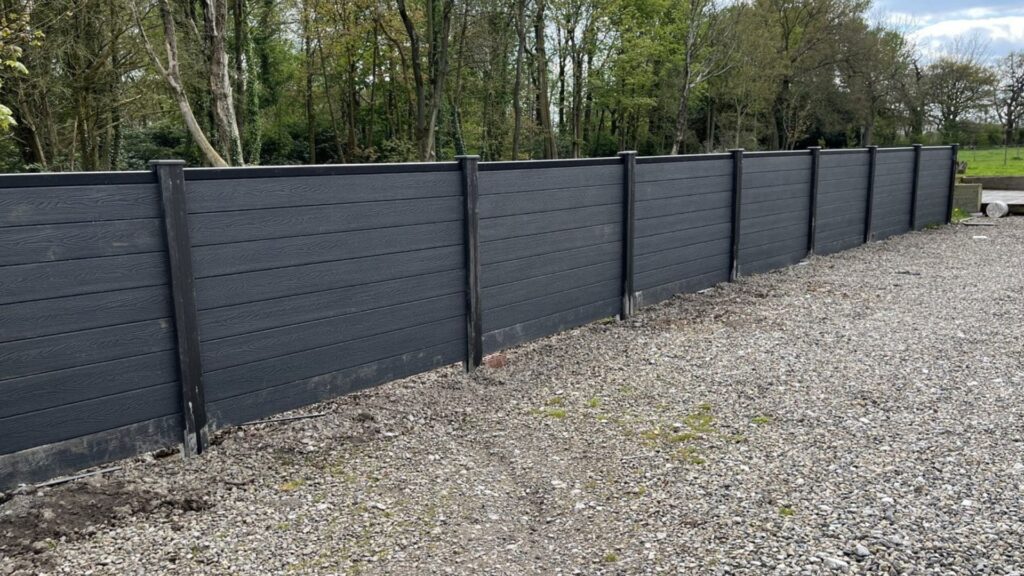
Real-Life Examples And Testimonials
When it comes to making an informed decision about your fencing, hearing from real people who have already made that choice can be incredibly valuable. In this section, we’ll dive into real-life case studies and testimonials to give you a clearer picture of what you can expect from composite fences over the long term.
Case Studies and Homeowner Stories
One of the best ways to understand the true value of composite fencing is to look at examples from homeowners who have used this material for a decade or more. Take, for instance, John and Sarah, who installed composite fencing around their property over 12 years ago. Before opting for composite materials, they were concerned about the frequent maintenance and eventual replacement costs associated with traditional wood fencing. After researching their options, they chose composite fencing for its low-maintenance promise and long-term durability.
Fast forward to today: their fence still looks as pristine as the day it was installed. John and Sarah love the fact that they’ve only needed to give it an occasional wash to keep it clean. They’ve never had to worry about rot, splintering, or the fading that usually plagues wooden fences. This kind of longevity is what makes composite fencing stand out in comparison to other materials.
Another homeowner, Lisa, installed a composite fence eight years ago in a coastal region known for harsh weather. Despite exposure to salty air and constant moisture, her fence hasn’t shown any signs of warping or decay, which is a common issue for wood fences in similar climates. Lisa points out that, while she sees her neighbors repairing or repainting their wooden fences, her composite fence has required no additional work beyond a simple rinse to remove the buildup of dust and grime.
These are just a couple of examples that demonstrate how composite fences maintain their look and structural integrity over the years with minimal effort. Whether you live in an area with extreme weather conditions or you’re simply looking for a fence that won’t require regular upkeep, composite fencing is proving itself to be a worthwhile investment.
Testimonials on Durability and Satisfaction
Homeowners who have switched to composite fencing often rave about its resilience and the peace of mind it provides. Here are a few quotes that capture their experiences:
- “Our composite fence has been standing strong for over 10 years, and it still looks fantastic. We love that we don’t have to deal with the hassle of painting or repairing damaged panels like we did with our old wooden fence.” – Mark H., homeowner
- “I was skeptical at first about how well composite fencing would hold up against the elements, but after five years, I’m a believer. It looks just as good as the day we installed it and hasn’t required any maintenance besides a quick wash.” – Julie P., homeowner
- “Choosing composite was the best decision we made for our yard. Not only does it look great, but the fact that we don’t have to worry about it deteriorating over time is a huge relief.” – Steven L., homeowner
These testimonials highlight the satisfaction that comes with choosing a fence that not only looks great but is built to last. Many homeowners express relief in knowing that their investment in composite fencing has paid off over the years, offering them a durable, low-maintenance solution that holds up in various environments.
In summary, real-world examples and testimonials reinforce the long-term benefits of composite fences. Whether it’s the minimal maintenance required, the ability to withstand tough conditions, or the continued aesthetic appeal, composite fencing consistently delivers exceptional performance. These stories and reviews serve as a testament to the lasting value that this material can offer to homeowners everywhere.

FAQs: About How Long Do Composite Fences Last
How long do composite fences generally last?
Composite fences typically last between 25 to 30 years or even longer with proper care. Their blend of wood fibers and recycled plastic makes them highly durable and resistant to common issues like rot and insect damage.
What factors affect the lifespan of a composite fence?
The lifespan of a composite fence is influenced by several factors, including the quality of materials used, climate conditions, installation quality, and regular maintenance. Exposure to extreme weather conditions and UV rays can also impact its longevity.
Do composite fences require maintenance?
Yes, composite fences require minimal maintenance compared to wood fences. Basic cleaning with soap and water to remove dirt, mold, and mildew is usually sufficient. Occasional inspections for damage and UV protection treatments can also help extend their lifespan.
Can composite fences fade or discolor over time?
Composite fences may experience some fading over time due to prolonged exposure to sunlight and UV rays. However, the fading is typically gradual and doesn’t affect the structural integrity of the fence.
Are composite fences worth the investment?
Yes, composite fences are a worthwhile investment for homeowners looking for a long-lasting, low-maintenance fencing option. While the initial cost may be higher than wood, the long-term savings from reduced maintenance and repairs often make composite fences more cost-effective in the long run.
How do composite fences compare to wood fences in terms of lifespan?
Composite fences generally last longer than wood fences. While wood fences may need replacing after 5 to 15 years, composite fences can last 25 to 30 years or more, making them a more durable and sustainable option.
Can I paint or stain a composite fence?
Most composite fences come pre-finished and do not require painting or staining. However, some brands allow for staining if desired, though it is generally not necessary due to the fence’s inherent durability and color retention.
How do extreme weather conditions affect composite fences?
Composite fences are designed to withstand most weather conditions, including rain, snow, and heat. However, in extremely sunny climates, UV exposure may cause slight fading, and in areas with severe weather, regular inspections can help ensure structural integrity remains intact.
Do composite fences come with a warranty?
Many composite fence manufacturers offer warranties ranging from 15 to 30 years, depending on the brand and product quality. These warranties often cover structural defects, fading, and material integrity, ensuring long-term protection for your investment.
What’s the best way to clean a composite fence?
Cleaning a composite fence is simple. Use a mixture of soap and water, along with a soft brush or sponge, to remove dirt, grime, and mildew. Avoid using harsh chemicals or pressure washers, as they can damage the surface over time. Regular cleaning every few months will help maintain the fence’s appearance and longevity.
Conclusion
A composite fence could be the ideal solution for homeowners seeking a long-lasting, low-maintenance, and environmentally friendly option. Composite fences are built to endure harsh weather conditions and resist common issues like rot, fading, or warping, offering impressive durability that often surpass traditional wood fences. Not only do they have a longer lifespan, but they also require significantly less upkeep, saving you both time and money over the years. With their eco-friendly materials, composite fences are an excellent choice for those looking to reduce their environmental footprint without sacrificing style or performance. If you’re considering a new fence, it’s worth exploring composite options for their aesthetic appeal, strength, and ease of care. To make an informed decision, contact a local composite fence provider or visit a home improvement store to review styles, and materials, and get a custom estimate. Choosing the right fence can enhance your property’s value and provide peace of mind for years to come.
About the Author:
Mike Veail is a recognized digital marketing expert with over 6 years of experience in helping tradespeople and small businesses thrive online. A former quantity surveyor, Mike combines deep industry knowledge with hands-on expertise in SEO and Google Ads. His marketing strategies are tailored to the specific needs of the trades sector, helping businesses increase visibility and generate more leads through proven, ethical methods.
Mike has successfully partnered with numerous companies, establishing a track record of delivering measurable results. His work has been featured across various platforms that showcase his expertise in lead generation and online marketing for the trades sector.
Learn more about Mike's experience and services at https://theleadguy.online or follow him on social media:
